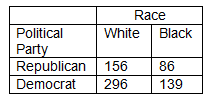Describe the strategies that can be used for managing unplanned terminations
What will be an ideal response?
Some settings may have their own protocols for dealing with "no shows," and a different mechanism may be needed for a client who fails to reappear after a first session (see Meyer, 2001 ) compared to one who ceases to appear for service midway through the course of treatment. A common response to unplanned termination by the client is for the social worker to reach out to him or her by phone, email, or letter. The goals in doing so may be to acknowledge the decision to conclude services, to encourage the client to come in for a closing session, or to achieve the purposes of such a session through the communication itself.
When a social worker dies or otherwise becomes incapacitated, it is incumbent upon his or her colleagues to intervene for the care or transfer of the clients involved. They must also recognize that these clients' needs and reactions will be shaped by the abruptness and nature of the loss, their personal loss histories, and the particular issues for which they were seeking help (Philip, 1994; Philip & Stevens, 1992). Thus, grieving the lost relationship may become a primary task alongside continued work on their treatment goals identified earlier.
Likewise, when a client dies unexpectedly, whether through an accident or a traumatic act such as homicide or suicide, the loss has significant implications for the helping professionals left behind. Out of respect for the client's continuing right to privacy, the social worker is ethically bound to keep known details about those individuals confidential, even after death. This being the case, the social worker's family members and friends are unable to help address the grief and may not even be aware of the loss. Supervisory and collegial support should be the primary resource for the mourner, with coworkers offering empathy, permission to grieve, and encouragement to talk about and integrate the feelings that emerge (Chemtob et al., 1988; Kruger et al., 1979; Strom-Gottfried & Mowbray, 2006).
You might also like to view...
The ethics as well as the politics of research hinge on ideological points of view
Indicate whether the statement is true or false
Students are concerned about the rising costs of a college education. What these students have experienced was that that cost per credit increased twice over a four-year span
They want to take these concerns to college administrators, but prior to this the students collect information on the costs per credit for 20 colleges in the region. Subsequently, the costs per credit from these colleges has a low dollar amount of $50.00, and a high dollar amount of $350.00. What is the statistic used for describing these different costs? a) Mean b) Measure of central tendency c) Median d) Range
A non-verbal experiential technique, in which family members position themselves in a tableau that reveals significant aspects of their perceptions and feelings, is known as:
a. existential encounter b. family sculpting c. family ritual d. conjoint family drawing
What would be the interpretation?

What will be an ideal response?